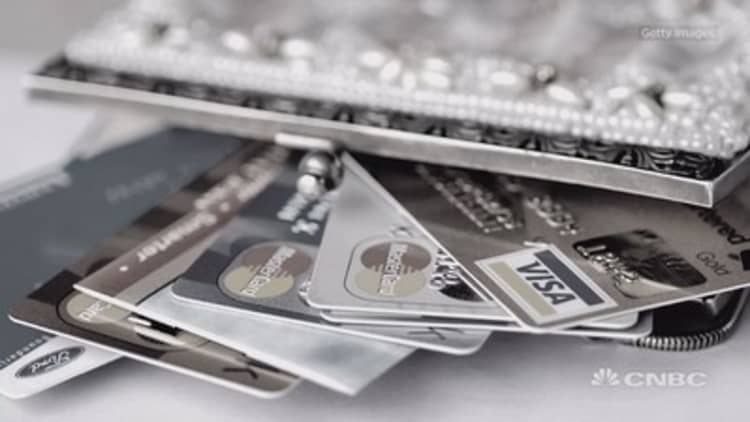
For a better rate on your savings, consider opening a new checking account.
Almost two dozen financial institutions nationwide are offering checking account yields of 2 percent or better, according to a new study from Bankrate.com. That's at least four to five times better than typical checking and savings accounts, which are averaging 0.39 percent and 0.46 percent, respectively. The highest rate came from Northpointe Bank in Grand Rapids, Mich., which at 5 percent is almost 13 times more than the average checking account rate. (Tweet this.)
Read MoreHaven't done this yet? Do it before the Fed rate hike
With those kinds of multipliers, most consumers would benefit from considering such an account, said Greg McBride, senior financial analyst for Bankrate.com. "Some people are literally earning 0.01 percent," he said. On a big balance, if you have money in one of these high-yielding accounts "you're adding several hundred dollars a year in interest earnings."
"It's checking in name only," said McBride. "The savvy savers that use this are going to treat this more like a savings account."
Read More45 millions Americans have no credit score
These offers are a move by smaller institutions to pull in deposits—and revenue. "Some of the banks, in lieu of what's been going on in the market overall, are now in the situation where they have had problems growing their checking account business organically," said Madeline Aufseeser, a senior analyst with research firm Aite Group. Dangling a juicy yield pulls in valuable high-worth customers, she said, while account requirements on paperless statements and debit card usage generate income.
Attractive as the rates may be, high-yield checking isn't a perfect fit for everyone. For starters, you may not be eligible to open one. Such accounts are offered primarily through regional banks and credit unions—of the 20 2-plus percent yields in the Bankrate.com study, 13 are available only to consumers who live in that financial institution's home state or, in the case of Advantage Plus FCU in Pocatello, Idaho, have a relative who is already a member. (See the chart below for seven high-yield checking accounts available nationwide.)
Checking accounts with rates of at least 2%
| Bank | City, State | APY | Default APY | Balance Cap |
|---|---|---|---|---|
| CapEd FCU | Meridian, ID | 2.50% | 0.05% | $10,000 |
| Consumers CU | Waukegan, IL | 3.09% | 0.01% | $10,000 |
| Cross Keys Bank | Saint Joseph, LA | 2.05% | 0.05% | $10,000 |
| Great Lakes CU | North Chicago, IL | 3.00% | 0.00% | $10,000 |
| Lake Michigan CU | Grand Rapids, MI | 3.00% | 0.00% | $14,999 |
| Lee Bank | Lee, MA | 2.50% | 0.05% | $15,000 |
| Northpointe Bank | Grand Rapids, MI | 5.00% | 0.05% | $5,000 |
Source: Source: Bankrate.com. Rates as of March 24, 2015.
Unlike regular checking accounts, which often impose minimum-balance requirements, high-yield accounts have maximums. "That higher yield is not unlimited," said McBride—a point worth considering when deciding which account is the best fit. In the case of that Northpointe Bank account, the cap is just $5,000; other banks have limits ranging as high as $25,000. Let your account balance increase beyond the cap, and the excess will earn a substantially lower rate of 0.05 to 1 percent, if anything.
Read MoreDoes credit card debt lead to depression?
The accounts also require users to jump through a number of hoops, said Aufseeser. "Can you meet the account conditions?" she said. That includes making 10 to 15 debit card transactions each month, paying at least one bill online, signing up for paperless statements and receiving at least one direct-deposit. Fail to play by the rules and you'll end up with a default rate often in the neighborhood of 0.01 to 0.05 percent, according to the Bankrate study.
Keeping your balance high, but not too high, while meeting those conditions may prove challenging, said Linda Sherry, director of national priorities for Consumer-Action.org. Consumers who are trying to build their emergency fund rather than find a new place to stash it may be better off sticking with a high-rate savings or money-market account, she said. Some of the highest-yielding accounts available nationwide have APYs of roughly 1 percent, and with fewer strings.


